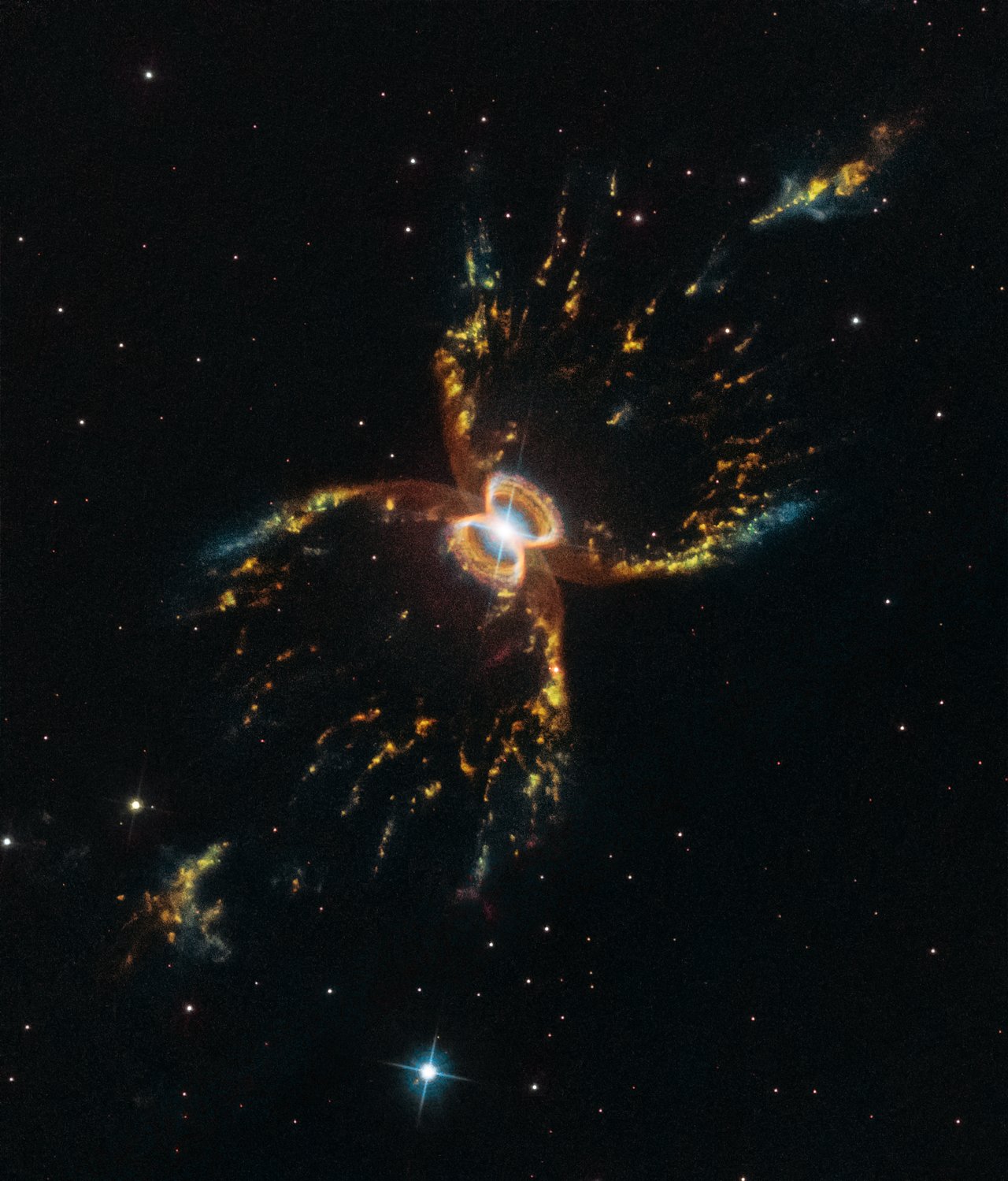
Incredibly enough, it’s been 29 years since the launch of the Hubble Space Telescope. In 1990 the telescope was launched into low Earth orbit, where it has remained for nearly three decades collecting information about deep space. Over the years the telescope has had various setbacks and upgrades, and to this day it remains one of the most versatile and well-known astronomy instruments in the world.
To celebrate its birthday, Hubble imaged the beautiful Southern Crab Nebula. The image above shows the hourglass-shaped nebula which was created by a binary star system, meaning a system in which two stars orbit each other.
The interaction of the pair of stars at the heart of the Southern Crab is what caused the development of the hourglass structure. One of the pair of stars is a large red giant, while the other is a small white dwarf. The red giant is in its final stages of life, shedding its outer layer of gas and other matter as it dies off, and it will eventually becomes a white dwarf too.
As the red giant sheds layers, matter is pulled in by the gravity of the white dwarf. When enough matter is collected by the white dwarf, it pushes out matter of its own in dramatic eruptions. The eruptions of matter from both the red giant and the white dwarf are what create the beautiful arcs of the hourglass.
When the red giant dies, it will no longer feed matter to its white dwarf companion and the structure of the nebula will be no more. But before that happens, astronomers expect that more eruptions could create even more intricate structures.
This is a return to a familiar friend for Hubble, which also imaged the Southern Crab in 1999. Back then it gathered data to create this basic image which showed the elaborate structure of the nebula for the first time:

It’s incredible to see how far telescope and imaging technology has come in the last twenty years. The new image of the Southern Crab is a visual treat and a fitting birthday celebration for our most beloved telescope.



